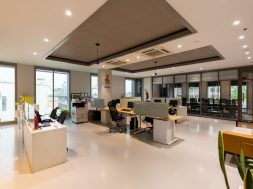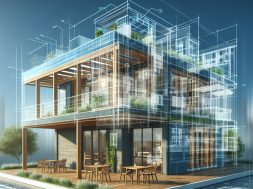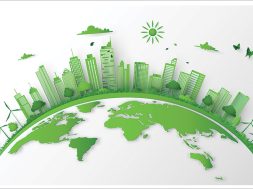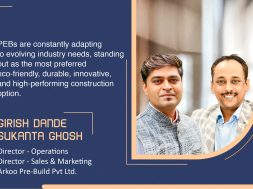Solar-integrated facade solutions for high rises

This interaction explores the selection of materials, maintenance and inspection strategies, and sustainable options for installing facades in high-rises.
High-rise buildings have become the norm. How do you select facade materials for these buildings in hot and cold climates?
The selection of materials for facades truly impacts the performance and temperature of the building. Stone cladding can be a perfect solution in hot and arid climatic regions. Because of its high thermal mass, it can absorb heat during the day and gradually release it in the evening when it gets colder. This aids in preserving a constant interior temperature. Further, porcelain cladding is also a good solution. Slabs made of porcelain are extremely resilient and perfect for keeping buildings cool because they are low-absorbing in heat and resistant to UV rays. Porcelain slabs are an attractive choice with the required durability for such harsh circumstances.
What are your methods and strategies for inspecting high-rise facades?
Some of the most popular methods for guaranteeing and limiting risk during building inspections include using rappelling gears, accessing the facade via a pulley system, or planning work for times when there is not much precipitation or wind. Using a remotely flown overhead drone is another popular modern tactic offering important insights into wall integrity and other problems that could affect the building’s stability and safety.
What are some of the latest trends in high-rise façade design with respect to the use of sustainable materials?
Vacuum-insulated, electrochromic, and low-emissivity (low-E) glasses are being opted for sustainable properties. Further, material fusion with wood and metal are two examples of creating distinct performance with aesthetic qualities. For better performance and less maintenance, self-cleaning facades with self-healing concrete are being used. Moreover, clean energy can be produced by integrating solar panels in the facade, which adds to the building’s sustainability and energy independence. The building’s energy efficiency and sustainability are enhanced by the integrated solar panels in the facade, which produce clean energy.

Can you elucidate some of the measures you have taken to optimise the energy performance of building facades, especially in the context of high-rises?
To improve energy efficiency in high-rise structures, it is important to begin with the right insulation materials and hues. Insulation enhances thermal performance and lessens heat loss. External thermal insulation systems (ETICS) can be applied for opaque building components. Moreover, materials with light colours can help lower heat gain. Heat gain can be decreased using fixed shade elements, including louvres, balconies, vertical fins, and horizontal overhangs.
What solutions do you provide to ensure indoor occupant comfort and safety while using your facades in high rises?
For occupant comfort, we focus on noise reduction and natural ventilation strategies. Incorporating sound-absorbing materials into facade designs reduces noise pollution from outside sources. Double-glazed windows can significantly reduce noise transmission, creating a quieter indoor environment. The facades are designed to maximise natural light while minimising glare. We incorporate operable windows or ventilation systems for fresh air circulation and natural ventilation.
What are the challenges associated with installing facades in high-rise buildings?
One of the challenges in high-rise facades is their accessibility. Reaching the upper floors of high-rise buildings requires specialised equipment and trained personnel. This can increase the cost and complexity of the installation process. Further, weather conditions can also pose a challenge in facade installation. High-rise buildings are exposed to harsh weather conditions, like wind, rain, and extreme temperatures. Facade installation must be carefully planned and executed to withstand various elements. Facades must be securely attached to the building structure to ensure stability and safety. This requires careful consideration of the building’s design and load-bearing capacity.
For more details, visit: https://www.jaideeptharejaarchitects.com/
Cookie Consent
We use cookies to personalize your experience. By continuing to visit this website you agree to our Terms & Conditions, Privacy Policy and Cookie Policy.










